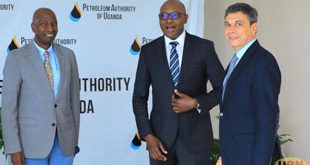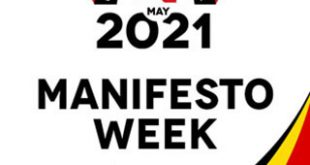
Kampala, Uganda | THE INDEPENDENT | The first batch of study materials that were distributed by the Ministry of Education to ensure continuity of learning after the closure of schools did not reach the learners.
The government planned to broadcast TV and radio lessons to learners in primary and secondary schools. This was supposed to be supplemented with standardized self-study lesson packages for all core subjects focusing on remedial work.
But as Ministry moves to roll out a second phase to cater for the non-finalists who will remain home beyond October 15, a URN mini-survey amongst learners and educationists in various parts of the country show little or no impact at all from the first phase.
This implies that the Ministry could have wasted up to six billion shillings in printing and distributing the materials. Up to six million copies of self-study materials were developed by the National Curriculum Development Centre-NCDC, printed and supposedly distributed, a task contracted by vision group.
Local government leaders told URN that the supplied copies were fewer compared to the number of learners who needed support to continue learning. Some districts received as low as 35 copies, which were not even enough to satisfy the student population in just one classroom.
In Bukomansimbi District, leaders shunned the materials on the ground that they were inadequate and making it impossible on who to give or who to leave out.
David Bbaale, the Kalungu District Education Officer, notes although parents and students were eager to get the self-study materials, the district only got 20 per cent of the materials it needed. Kalungu district has 5000 students in government schools.
“Don’t forget that most of the learners are in private schools. I think this can give a picture? Surprisingly even the materials in packages sent were not complete, you could find one copy of let’s say primary one had literacy only with other subjects missing,” says Bbaale.
Joyce Kemirembe, a Senior Two student from Mityana District was among the lucky ones who received the materials. She notes that although she was able to read on her own in some subjects like history and geography, she needed explanations in many of the subjects like mathematics, chemistry and biology.
Joseph Mukalazi, a parent and resident of Mulago, shares that they waited for the promised materials in vain and improvised by looking out for families that had received the material for photocopies. He adds that even after trying in all avenues, they failed to get materials for some subjects.
Mukalazi noted that aside from the shortage, the government materials were far better than all the rest on the market, and children could learn well under the guidance of someone with a clue on the concepts.
“For subjects like mathematics, I could guide them and I think they learnt something. But there was a gap in other areas like chemistry and biology and I could advise them to ask from colleagues in the neighbourhood,” says Mukalazi.
But Ismail Mulindwa, the chairperson of the Education COVID-19 Response Committee, notes that the few copies distributed were meant for learners who never had access to TV and radio lessons. “We thought that many learners could access the TV and Radio lesson. So, with limited resources, we printed a few to reach out in such areas and that also informed the distribution pattern,” Mulindwa told URN in a recent interview.
With a general perception that most households had a radio or TV, the ministry obtained 500 million Shillings from their Information and Communications Technology counterparts to secure airtime on radio stations that were going to complement Uganda Broadcast Corporation.
Although 37 stations across the country were selected with at least three or two perceived most listened to in a particular region, the ministry never paid for the said airtime and the allocated money is yet to be accounted for.
Aston Nuwaha, an administrator at Voice of Tooro, says that after being notified that the ministry was going to use their station for the broadcast, they offered airtime even before signing the contract. But Nuwaha shares that the education authorities kept on promising the funds until the programme was halted.
In some areas like Kalungu, education authorities decided to use megaphones to ensure that learners who had no access to radio and television get some form of continued learning. However, the idea didn’t see the light of the day.
As the government initiative appeared to be unclear, the private sector came in to bridge the gap with print media houses selling self-study materials as supplementary in their newspapers. TV and radio stations also started broadcasting lessons.
The National Curriculum Development Centre at one time noted that they were developing special materials for learners with different impairments. However, to date, none of the said materials has ever been given out thus locking out approximately two million learners with special needs from the programme.
Dr Ahmed Ssengendo, an expert on instructional technology and pedagogy, notes that before rolling out a second phase which will be covering a wide scope, the ministry needs to carry out an evaluation.
“It would be better if the ministry evaluates what has been done before we moved forward. It results to find out that it is effective, we move forward if there are issues, we look for a possible solution than repeating the same mistakes at the expense children’s future,” says Dr Ssengendo.
Alex Kakooza, the Education Ministry Permanent Secretary, noted that they were still getting feedback through local leaders and district education. In the same development, Grace Baguma, the director of the National Curriculum Development Centre, shares that they have also partnered with Makerere University to evaluate the programme.
However, many educationists and parents are still wondering why the ministry is issuing out a second phase before findings of the evaluation is disseminated and discussed.
*******
URN
 The Independent Uganda: You get the Truth we Pay the Price
The Independent Uganda: You get the Truth we Pay the Price


